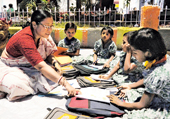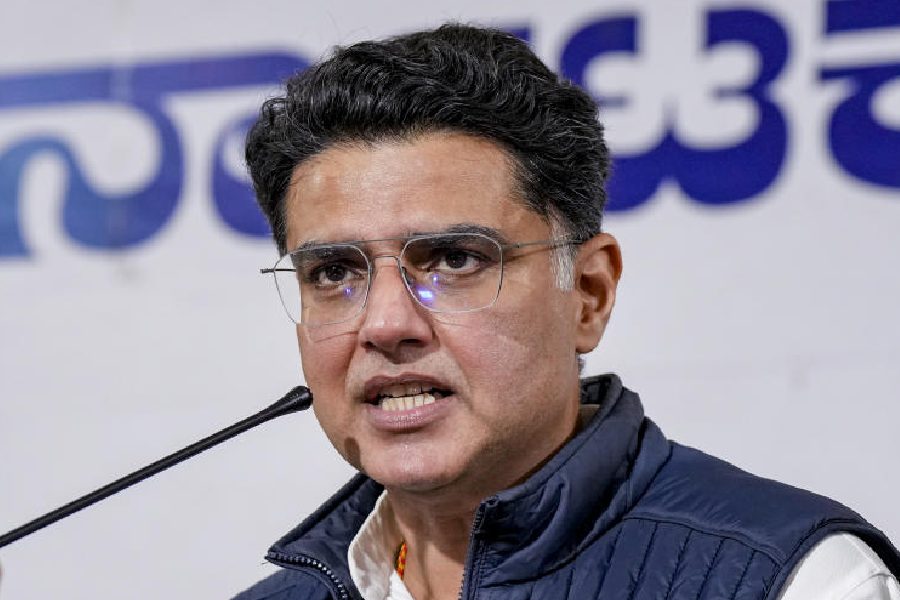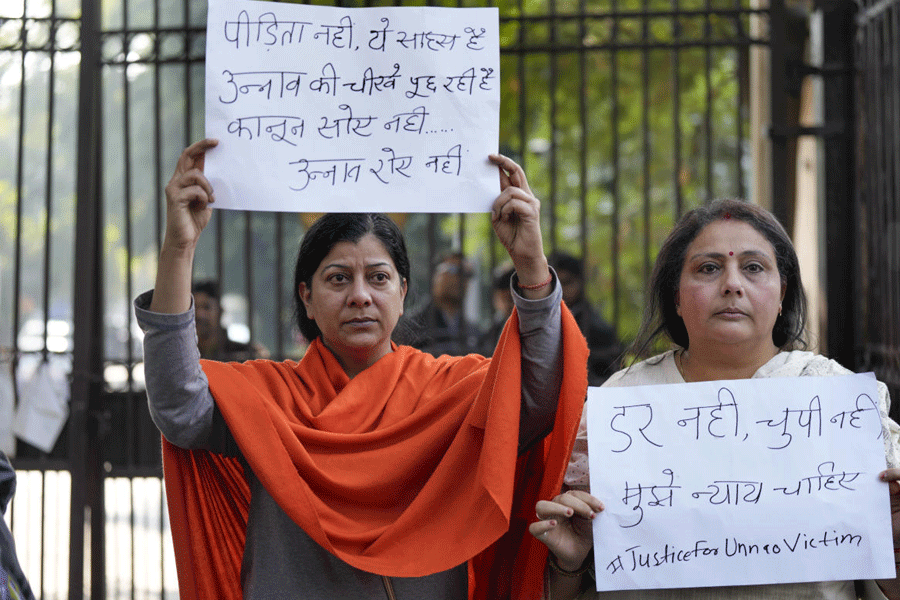 |
| Kanta Chakraborty with her girls at Dum Dum Junction station on Tuesday evening. (Pradip Sanyal) |
Three summers ago, her biggest regret was being childless. Today, she is a doting mother to 20 girls, replacing the begging bowls in their hands with books and the Dendrite they sniffed with dancing feet.
Kanta Chakraborty began by taking under her wings five girls who begged for a living in and around Dum Dum Junction railway station. That was in 2007. Now, the 44-year-old is busy teaching, feeding, clothing and protecting 20 such girls, all between three and 10 years old.
No wonder the primary school teacher was greeted with loud applause as she took the Science City stage on Saturday to receive her certificate for the Frank Brothers Honour for an Educationist at The Telegraph School Awards for Excellence. “The honour I was given reassured me that I was doing a job that was much needed,” said Kanta.
She remembers seeing the girls begging on the Dum Dum platform every day on her way to the Behala school she teaches in. She also remembers “wanting to do something” but being afraid to take the first step. “One day when they came to ask for money I asked them why they didn’t study and they asked me who would teach them. That was the turning point,” Kanta told Metro, seated on a plastic chair on platform No. 1 of Dum Dum and keeping an eye on her girls.
 |
| Kanta Chakraborty receives the certificate for the Frank Brothers Honour for an Educationist at The Telegraph School Awards for Excellence on Saturday. (Anindya Shankar Ray) |
With a nod from husband Chandan, who works in a printing press, she got down to work. First, she urged the girls to start studying. Then, she started teaching them on the platform, before and after her school hours.
In 2008, she registered the Niharkana Rehabilitation Centre. Since then, she starts the day at 5am and leaves her Dum Dum home at 7.30am. The next 90 minutes are devoted to her ‘daughters’ on platform No. 1 — a curtained-off portion to the left of subway number two — bathing them, helping them with their school work, feeding them and then packing them off for the day to the Muktadhara Corporation Vidyalaya.
She then heads off to school, only to be back on the platform, this time at the entry to the Metro station, by 6pm. She returns home after she has put the girls to bed.
Kanta provides for the girls primarily from her home kitty, but she has gradually gathered around her a growing number of supporters — commuters drawn to the endeavour once they realise what goes on behind the drawn curtains on the platform.
“When I started I could not give them enough food but now I have a caterer who gives them food in the morning and night. Many people give me clothes for the girls, others give books and pencils,” said Kanta.
The Niharkana Rehabilitation Centre works closely with the railway hawkers, the Railway Protection Force and the General Reserve Police to ensure protection for the girls.
Bijoy Kahar, father of one of the girls under Kanta’s care, escorts the girls to and from school and keeps guard at night when they sleep on plastic sheets in the subway. A dance teacher, an art teacher and a doctor help Kanta out.
“I wish they would make a railway school. So many lives could be saved. How much can one do alone,” wondered Kanta.
But she alone has brought a smile to the lives of 20 girls and given them a dream. “Amake Didi jiggesh korlo ‘porbi’, aami bollam ‘hyan’. Aagey bhikkha kortam ekhon school-e jai (Didi asked me if I wanted to study, I said yes. I used to beg, now I go to school),” said little Roshan Banu, flashing a toothless grin.











